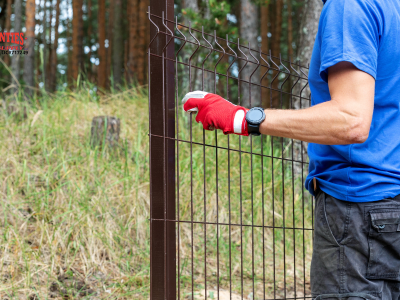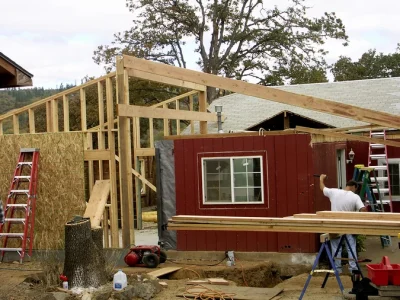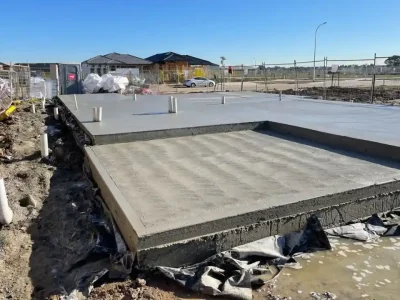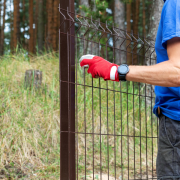Securing your yard or property perimeter has become a growing necessity for residential, commercial, and critical infrastructure environments. While perimeter intrusion detection systems (PIDS) offer a proactive line of defense, the choice between a buried cable intrusion detection system and a fence intrusion detection system isn’t always clear-cut. Yard size, layout complexity, and usage all influence which technology will best protect your property without generating false alarms or requiring unnecessary expenses.
To assist you in making an informed choice, this article dissects the advantages, drawbacks, and ideal applications for each choice.
Understanding the Technologies
A buried cable intrusion detection system relies on sensor cables installed underground around the protected perimeter. These cables detect vibrations, pressure, or electromagnetic disturbances caused by footsteps, digging, or movement near the buried zone. Depending on the system, technologies like magnetic field sensors or microphonic cables are used to sense intrusion.
A fence intrusion detection system, on the other hand, is mounted directly onto existing fencing. It detects physical tampering with the fence, such as cutting, climbing, or lifting, using sensors like piezoelectric wires, fiber optics, or accelerometers. When installed correctly, these systems can turn any basic fence into a smart security barrier.
Yard Size Considerations
Small Yards (under 2,000 square feet):
For small properties or compact urban homes, a fence intrusion detection system is typically the better option. These systems are more cost-effective on shorter perimeters and can easily integrate with an existing fence, avoiding the need for excavation. Since detection is limited to direct contact with the fence, they minimize the risk of false alarms from neighborhood activity just outside the property line.
Medium Yards (2,000–10,000 square feet):
In this range, either system could work depending on the layout and priority. If the yard has existing fences, retrofitting with a fence system is usually easier and faster. However, if security concerns extend beyond the immediate perimeter—such as concerns about digging under the fence or silent entry—a buried cable intrusion detection system offers stealthier and more comprehensive detection coverage.
Large Yards or Estates (over 10,000 square feet):
For large or complex properties—especially those with multiple access points, gardens, or wooded areas—a buried cable intrusion detection system offers unmatched flexibility. It can be installed along driveways, under lawns, and around standalone structures to create an invisible security boundary. Its discrete nature also preserves the aesthetic of landscaped areas, which may be important for upscale residences or commercial venues.
Layout and Terrain Factors
Flat, Open Yards:
These are ideal for buried cable systems, especially if you want to keep the security system invisible. A flat, open terrain makes installation easier and improves accuracy since the signal doesn’t have to deal with abrupt elevation changes or obstructions.
Uneven or Sloped Terrain:
Sloped yards or hilly areas may require special calibration for buried cable systems, increasing installation complexity. In such cases, fence-mounted systems might be a simpler alternative, provided the fences themselves are stable and continuous.
Heavily Landscaped or Garden Areas:
If your property includes flower beds, water features, or stone paths, a buried cable intrusion detection system is often the better choice. It avoids tampering with decorative fencing and can be adjusted to ignore vibrations caused by small animals or wind-driven plants with proper zoning and sensitivity tuning.
Shared or Incomplete Fencing:
If your perimeter fencing is partial, shared with neighbors, or inconsistent in height and material, a fence intrusion detection system may not be practical. In such scenarios, a buried cable offers consistent protection regardless of fence quality or continuity.
Installation and Maintenance
Buried Cable Intrusion Detection System:
- Pros: Hidden from sight, unaffected by weather, hard to tamper with.
- Cons: Requires trenching and soil disturbance, sensitive to soil type and compaction, harder to relocate.
- Best for: Long-term, high-security applications where stealth and aesthetics matter.
Fence Intrusion Detection System:
- Pros: Quick installation, ideal for retrofitting, cost-effective for small areas.
- Cons: Visible components, affected by fence stability and weather (e.g., high winds or snow loads).
- Best for: Properties with secure, stable fencing and smaller yard sizes.
Integration with Other Security Systems
Both systems can be integrated into a broader security infrastructure, including CCTV, alarms, and home automation platforms. Many systems support zone-based alerting, allowing you to pinpoint the location of an intrusion attempt and take targeted action.
For example, combining a fence intrusion detection system with camera activation in high-risk zones offers layered security. Alternatively, pairing a buried cable system with outdoor lighting or drones enables invisible perimeter protection with responsive deterrence.
Making the Right Choice
Ultimately, the right PIDS depends on your property’s unique characteristics:
- Choose a fence intrusion detection system if you already have a stable, continuous fence and want an affordable, fast-to-install solution.
- Choose a buried cable intrusion detection system if you want discreet, comprehensive coverage across a larger, open, or irregularly shaped area.
In some cases, a hybrid approach might work best—using buried cables for open or landscaped sections and fence-mounted sensors where fencing is strong and secure. Consulting with a professional integrator or security specialist will ensure that your system is calibrated to your specific terrain, usage, and risk level.
Final Thoughts
As perimeter threats evolve, smart property owners are turning to proactive defense solutions like PIDS. Whether you opt for a buried cable intrusion detection system or a fence intrusion detection system, tailoring the technology to your yard’s size and layout will maximize both security and value. With the correct configuration, you can rest easy knowing that your perimeter is constantly watched over and guarded.













Comments